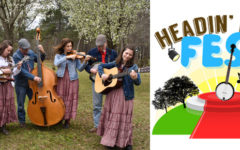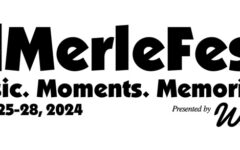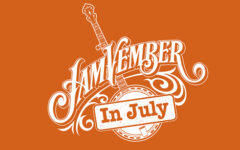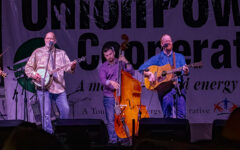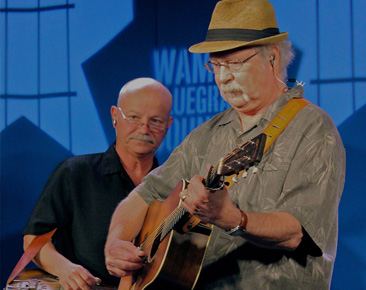
 In just over 24 hours over the weekend, the Seldom Scene played two shows that encapsulate everything that is good about bluegrass.
In just over 24 hours over the weekend, the Seldom Scene played two shows that encapsulate everything that is good about bluegrass.
The first, Friday afternoon, was in the tiny Black Box Theater at WAMU Radio in Washington, DC. The theater, named because the walls are dark and the room is, well, a box, is one of the showcase attractions in the station’s new studios.
Just over 50 lucky fans, who were chosen by drawing from among BluegrassCountry.org members who expressed an interest in the show, packed the venue that wasn’t much bigger than Ben Eldridge’s Bethesda, MD, basement room where the band played for the first time more than four decades ago. But many were able to listen in on the WAMU’s broadcast channels, which have limited reach, or a live stream that gets sent worldwide on the Interet.
And I do mean worldwide. Tom and Sally Marchessault, friend’s of Scene guitarist and lead singer Dudley Connell, tuned in from a vacation trip in Prague.
 Those in the room Friday afternoon will probably never be closer to a band unless they’re holding an instrument on stage. Just a few minutes before the live show started, Connell sat on the end of the stage, holding his Martin guitar and sipping from a bottle of water. “How are you folks doing,” he asked a grandfather who has been following the band for decades and his young grandson, who was attending his first show. They sat in the front row, less than two feet from Connell, and just a few feet more from the single microphone at center stage. (The kid is in for a let down at the next show he attends. Even if he’s in the front row at the next venue, the band will seem SO far away!)
Those in the room Friday afternoon will probably never be closer to a band unless they’re holding an instrument on stage. Just a few minutes before the live show started, Connell sat on the end of the stage, holding his Martin guitar and sipping from a bottle of water. “How are you folks doing,” he asked a grandfather who has been following the band for decades and his young grandson, who was attending his first show. They sat in the front row, less than two feet from Connell, and just a few feet more from the single microphone at center stage. (The kid is in for a let down at the next show he attends. Even if he’s in the front row at the next venue, the band will seem SO far away!)
WAMU DJ Katy Daley drove home how extraordinarily fortunate the small audience was. “There are people all over the world who are jealous because they’re not you,” she said.
The show was solid, despite a rain-delayed drive from deep in Virginia that left them just minutes from the end of the sound check to the opening notes of My Little Georgia Rose, limited practice singing around a single microphone, and Lou Reid’s strained voice.
After the hour-long set, interspersed with questions from Daley, the band signed CDs, chatted with fans who traveled for up to six hours to hear them and reminisced about past shows they had seen.
 The scene was the same the next day in Gettysburg, and so was the Scene. The only difference, really, was the size of the crowd – about 1,500 for the band’s afternoon set, the first of three it would play there over two days.
The scene was the same the next day in Gettysburg, and so was the Scene. The only difference, really, was the size of the crowd – about 1,500 for the band’s afternoon set, the first of three it would play there over two days.
Older patrons sat in lawn chairs in the muddy field, mouthing the words to songs they had heard dozens of times over the years. In a nearby volleyball court that had filled with water from heavy rains the previous two days, kids too young to know any of the words frolicked in the muck. And between the oversized sandbox and the muddy seats, a woman who definitely wasn’t born when the Seldom Scene played its first show in 1971 moved so gracefully with a hula hoop that I half expected to see a snake charmed out of a nearby hat.
 That’s not unique about Gettysburg. Similar scenes will play out at nearly every bluegrass festival this summer. One of the beauties of bluegrass is that everyone is welcome. Another is that the musicians are so accessible, even when they’re not in a tiny room playing for just a few dozen folks.
That’s not unique about Gettysburg. Similar scenes will play out at nearly every bluegrass festival this summer. One of the beauties of bluegrass is that everyone is welcome. Another is that the musicians are so accessible, even when they’re not in a tiny room playing for just a few dozen folks.
Even before the band left the stage, a few dozen folks lined up at the merchandise tent, clutching CDs, posters and memories. One by one, they sought out band members.
Many of the fans who waited leaned on canes or stretched their backs as they waited. As they collected signatures, they chatted with band members about their first times at a Scene show, remembering their youth. There was a bit of confusion. One gentleman pointed at the band member standing nearby and asked me, “Is that John Starling.” I shook my head, but before I could answer, he asked, “Tom Gray.” It was Ben Eldridge, the last original member in the band, though Starling and Gray both made guest appearances on the new album, Long Time…Seldom Scene.
 But there were also a fair number of kids under 10, clutching autograph books and waiting to make their own memories about their first time seeing the band.
But there were also a fair number of kids under 10, clutching autograph books and waiting to make their own memories about their first time seeing the band.
Two completely different venues, but one very clear, and very comforting, message.
Bluegrass is alive and well.
And judging from the crowd and the rows of tents and RVs that marked the latest invasion of Gettysburg, the economy is getting well.
That, too, is comforting at the start of yet another bluegrass summer.

